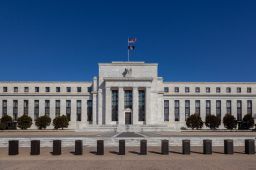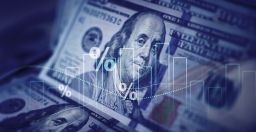Credit card defaults just hit a new high: What it means for the economy
The number of credit card loan accounts in the United States back in 2010 stood at 385 million.Past performance isn’t a reliable indicator of future results
Today, that figure has climbed rapidly to 630 million accounts. That's roughly twice the size of the U.S. population. So, the average American adult now holds between two and three credit card loans.
At the same time, the total credit card loan balance in the US has also surged, rising from $760 billion in 2010 to over $1.2 trillion today.
This growth raises some big questions about overall household financial health
Meanwhile, credit card loans, although growing rapidly, currently contribute around 6%. But even though credit card loans represent a very small portion of total outstanding debt, they are often viewed as an indicator of near-term consumer stress. The delinquency rate on credit card loans, which means loans with delayed payments by 90 days or more, has surged from around 8% in 2023 to over 12%.
When delinquency rates rise, it means more people are falling behind on their debt obligations. To put that in perspective, these are levels not seen since the depths of the 2008 financial crisis. In fact, this current surge is even higher than what we saw during the COVID recession. When we overlay the delinquency rate of mortgage loans, however, it still looks remarkably healthy. In fact, this is the lowest level we have seen the mortgage loan delinquency rate since prior to the global financial crisis in the first quarter of 2007.
That said, some analysts suggest this divergence may not last indefinitely
Mortgage loan delinquencies could begin turning up from here. Most mortgages in the US are fixed rate during the period of the loan. This essentially means people who locked in their mortgage during 2020 or 2021 are still paying low rates, likely below 3%, and their monthly payment hasn't necessarily increased along with the interest rates.
In contrast, credit cards have floating interest rates. That means when the Fed raises rates, credit card bills immediately get more expensive. From 2022, interest rates on credit cards have surged from 15% to now around 21%. Moreover, when money gets tight, most people will pay their mortgage before anything else because no one wants to lose their home. Credit card bills often come second, but that doesn't mean they're not important.
Delinquency rates on consumer loans
Delinquency rates on consumer loans like credit cards offer a powerful lens into how well the average American is holding up financially. When financial conditions are strong, consumers stay current on their payments. They avoid interest charges, protect their credit scores, and preserve access to future borrowing. This behavior signals strong purchasing power and a higher likelihood of continued spending, fueling economic growth.
Conversely, if delinquency rates are rising, this typically means that more households are falling behind missing payments they can't afford to pay. This often reflects growing financial stress, tighter household liquidity, and a weaker future consumption. Of course, short-term spikes and delinquency don't always translate into long-term economic weakness. Households can adapt, lenders can adjust, and broader conditions such as employment remain important factors.
But if consumer finances continue to weaken, this could create headwinds for economic growth in the near future. Consumer spending plays a huge role in the US economy, now contributing nearly 70% of total gross domestic product. This year has risen from around 58% in 1965, meaning the US economy has become increasingly reliant on consumer spending as a key growth driver.
So, a hit to the consumer could have a direct impact on US GDP
Some analysts believe current conditions could potentially be pointing in that direction. This chart shows the percentage of loan balances that are in the early stages of delinquency. While the standard delinquency rate measures loans that are 90 plus days past due, this one captures loans that are 30 days past due.
As you can see, early stage delinquencies in mortgage loans have been rising from 1.45% in 2021 to 3.7% in 2025. In fact, all other types of loans such as student loans and auto loans have also experienced a meaningful rise. Still, early delinquencies can sometimes normalize if household finances stabilize.
But with mortgage rates staying at very high levels, this could eventually lead to a rise in actual delinquencies as consumers who weren't able to lock in low rates may get squeezed by higher interest payments going forward. That's when consumers could cut back on spending, potentially taking the economy into a recession.
However, it's important to note that while mortgage delinquencies have been rising recently, they remain at relatively low levels, nowhere near the surge seen during the onset of the 2008 financial crisis. At this stage, the data does not suggest an immediate systemic risk, though it bears watching closely.
At capital.com, we'll keep you updated on key economic indicators and market trends. Explore more insights in our Educational Hub.

